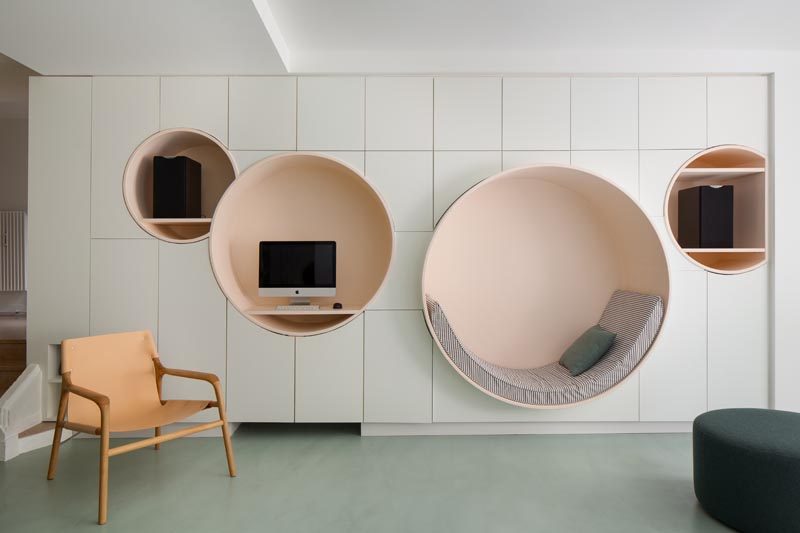When it comes to getting the maximum use of a small or limited space, incorporating space saving hacks into your design will enable you to effectively utilize it, without resorting to a cramped or crowded space. Though some hacks may seem relatively obvious, getting additional tips on how to better use and/or layer them may just be the game changer you’ve been looking forward to this entire time.
Hack #1 Recessed Nooks
Recessed nooks refer to those niche spaces tucked into walls that came about during construction and include spaces under staircases, within inset columns and between parallel adjacent walls. Depending on the location, these recessed nooks can be the perfect space to put up shelving for a pantry, shoe rack or minibar, create a study or workstation area, build a coffee station or fit a closet or little home for your pets. The options are as many as your imagination can conjure up so don’t limit yourself.
Hack #2 Vertical Spaces
This hack is on how you can better utilize vertical spaces. Those high walls need not only house the occasional lizard or spider; with a limited floor space area, using the walls for additional storage shelving, is one great way to reduce and remove any clutter from the floors. Splitting and reducing the wall height by introducing an additional level is another great option. We often see this when looking at tiny homes and tiny living settings, where the bottom half is dedicated to communal space while the top half caters to your sleep, study and storage needs. Having different seats set at different heights on the wall is another great move gaining popularity in several institutional, hospitality and commercial establishments.
Hack #3 Multifunctional Items
This hack boils down to the smart purchases you make while designing the space. Multifunctional furniture items like having seats that triple up as beds and storage, staircases that double up as shoe racks or storage, beds that transform into workstations and tables into stools or pouffes is the way to go. You end up with less clutter, less furniture pieces but lose zero functionality. If anything, you gain more from the set-up than you would have had you initially gone for the more traditional route.
Hack #4 Collapsible Furniture
Similar to the previous hack, collapsible furniture allows you to only use a specific piece when it’s needed and comfortably tuck it away when not in use. Think of a murphy bed which you pull down from the recessed wall nook when ready to sleep and return in place the following morning freeing up floor space in your room. A study workstation that collapses into the wall when not in use and can easily be put together when needed for a task. A dining table that expands to seat additional people and collapses to comfortably accommodate one or two people. Inset seating plus stools and pullout storage beds, the list is endless with more and more innovations coming up each and every day.
Hack #5 Mirrors
I decided to include mirrors as a bonus hack since they mostly influence how you perceive a space instead of increasing its functionality. With the right mirrors in place, any space automatically appears larger, brighter and airier. The illusion of windows is created where none exists, low set ceilings easily double in height and lighting bounces off beautifully within the space. It’s practically impossible to go wrong with installing mirrors in small spaces.
That said, with these space saving hacks in place, living in a small space will not require any compromise from your end. If anything, once you start layering them, your space will feel much bigger than you could have ever imagined. So don’t limit yourself, make your space work for you by intentionally introducing these space saving hacks in the right areas, and see the magic happen.
Till next time…Baraka Tele


